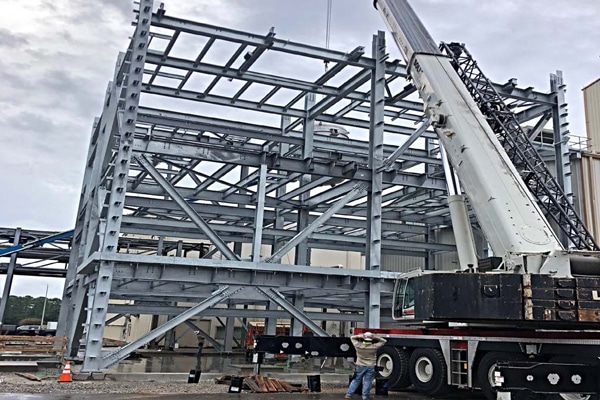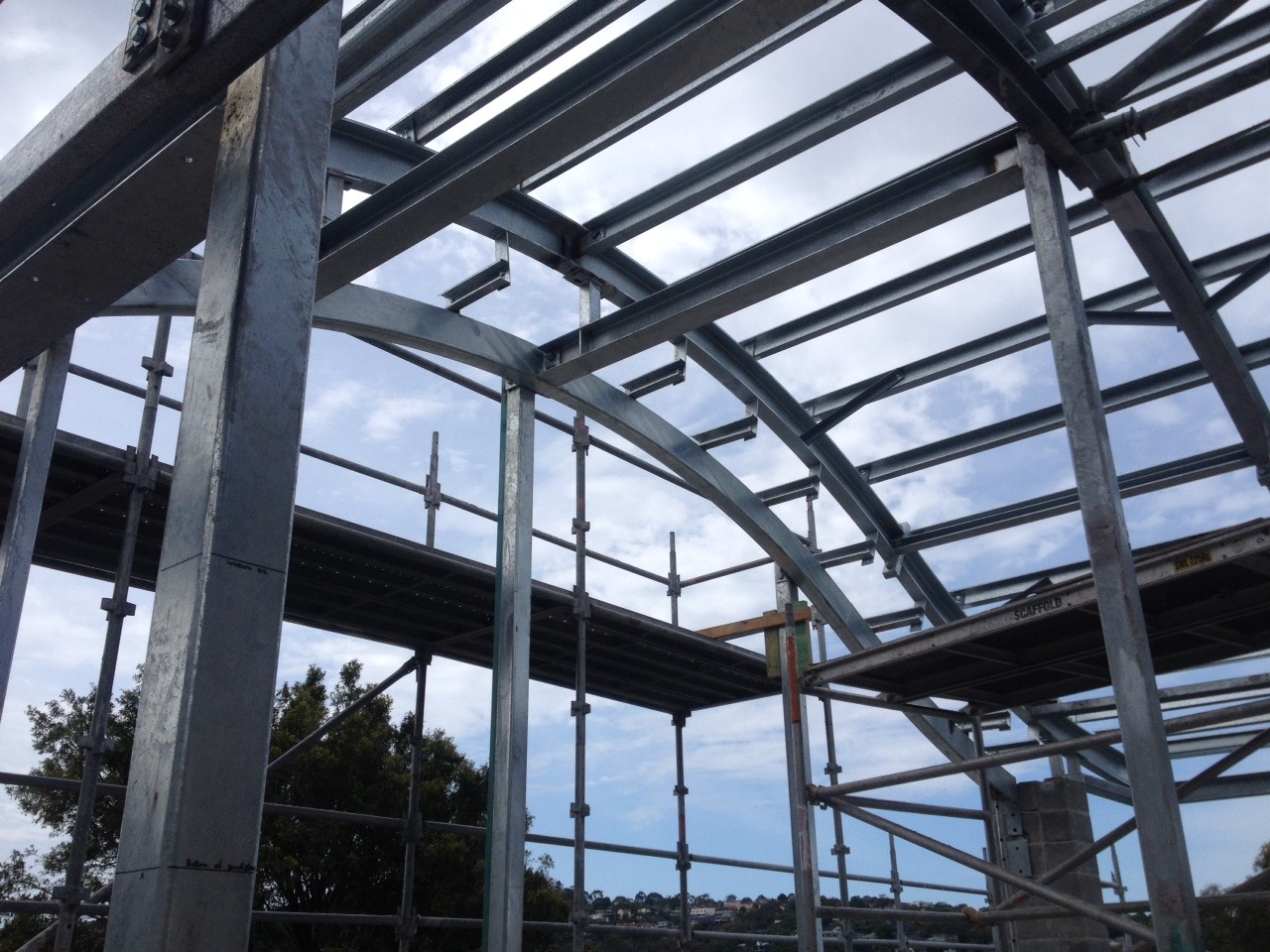Comprehensive Steel Fixing Services for Construction Projects
Comprehensive Steel Fixing Services for Construction Projects
Blog Article
Cutting-edge Trends in Steel Manufacture: Enhancing Sturdiness and Precision
In the realm of steel construction, the search of resilience and precision has actually led to a wave of cutting-edge fads that are reshaping the industry. These trends are not just shaping the existing however additionally laying the foundation for the future of steel manufacture, promising further enhancements in sturdiness and accuracy.
Advanced Welding Technologies
In the world of steel manufacture, the fostering of cutting-edge welding technologies has considerably transformed the market's technique to accomplishing remarkable top quality and accuracy in architectural welds. Advanced welding innovations, such as laser beam of light welding and friction stir welding, have emerged as game-changers in the field. Laser light beam welding uses a concentrated laser light beam to sign up with metal elements with amazing accuracy and rate, making it ideal for intricate layouts and slim materials. On the various other hand, friction stir welding develops exceptionally strong bonds by mechanically intermixing the molecules of the products at the joint, removing the requirement for melting the steel. These modern technologies use various advantages, consisting of minimized heat-affected areas, marginal distortion, and improved mechanical residential or commercial properties in the welded joints. By leveraging these advanced welding strategies, steel producers can elevate the resilience, toughness, and precision of their architectural welds, meeting the increasingly requiring demands of modern-day building and construction projects.
Robotic Automation in Manufacture
Embracing robotic automation has actually become a foundation of modern-day steel fabrication methods, simplifying processes and improving efficiency across the market. Robotics are revolutionizing the method steel elements are made, offering exceptional accuracy and rate while lowering human error. These automated systems can deal with repeated tasks with constant precision, bring about greater quality end products.
One key advantage of robotic automation in steel construction is the capability to function all the time without exhaustion, dramatically raising production outcome. This continuous operation reduces downtime and speeds up job timelines, eventually conserving expenses for suppliers. Furthermore, robots can be programmed to carry out elaborate tasks that may be hazardous or tough for human employees, boosting security in the work environment.
Additionally, robotic automation allows smooth integration with various other electronic innovations, such as computer-aided layout (CAD) software and Web of Points (IoT) systems (steel fabricators melbourne). This interconnected strategy enhances communication between various phases of manufacture, optimizing process and making certain real-time monitoring and control. As the steel construction market remains to evolve, robotic automation sticks out as a transformative pressure driving performance and accuracy in manufacturing processes

High-Strength Alloy Development
The development of high-strength alloy development in steel fabrication is reshaping the industry's method to enhancing material sturdiness and performance. High-strength alloys are engineered to exhibit exceptional mechanical residential properties, such as raised tensile toughness, sturdiness, and deterioration resistance contrasted to standard steel grades. By integrating these advanced alloys into manufacture procedures, makers can create elements that endure higher stress and anxiety degrees and extreme atmospheres, bring about more reliable and sturdy final product.
One key benefit of high-strength alloy development is the capacity to lower material thickness without jeopardizing architectural stability. This not only results in lighter-weight parts however also adds to cost financial savings and enhanced efficiency in manufacture and assembly processes. The enhanced strength-to-weight proportion of these alloys allows for the layout and construction of frameworks with higher load-bearing abilities while reducing total weight.
3D Modeling and Simulation Software
Innovations in steel construction procedures have been substantially moved by the assimilation of advanced 3D modeling and simulation software program devices. These tools enable fabricators to produce thorough virtual designs of their tasks, enabling them to picture the end product with accuracy prior to have a peek at this site any physical job starts. By simulating different stress and anxiety elements, ecological problems, and architectural loads, producers can maximize layouts for enhanced sturdiness and efficiency. Additionally, 3D modeling and simulation software improve the manufacturing procedure by recognizing potential issues early, lowering the demand for costly rework and reducing material waste.

Sustainable Practices in Steel Manufacturing
Incorporating lasting practices right into steel production procedures is important for decreasing environmental influence and guaranteeing official statement lasting resource accessibility. One key sustainable technique is the adoption of energy-efficient modern technologies to reduce greenhouse gas discharges throughout the steel manufacturing procedure. This includes using eco-friendly energy sources, such as solar or wind power, to power steel plants and applying energy-efficient equipment to enhance power usage.
One more critical element of sustainable steel production is the liable sourcing of resources. This includes making sure that the iron ore and various other resources utilized in steelmaking are gotten from moral and environmentally friendly sources. By promoting transparency in the supply chain and sticking to rigorous ecological standards, steel producers can lessen the adverse impacts of resource extraction he said on local ecological communities and communities.

Conclusion
In conclusion, the cutting-edge fads in steel construction such as sophisticated welding technologies, robot automation, high-strength alloy advancement, 3D modeling and simulation software application, and sustainable practices are boosting the toughness and precision of steel items. These improvements are reinventing the steel fabrication sector by enhancing sustainability, effectiveness, and top quality. It is clear that the future of steel construction lies in welcoming these advanced modern technologies to meet the needs of modern building and construction and manufacturing industries.
In the realm of steel manufacture, the quest of durability and accuracy has led to a wave of ingenious fads that are reshaping the sector.In the world of steel fabrication, the fostering of sophisticated welding innovations has substantially transformed the sector's method to attaining premium high quality and accuracy in architectural welds. As the steel fabrication market proceeds to evolve, robotic automation stands out as a transformative pressure driving performance and precision in producing procedures.
In addition, recycling and reusing steel scrap and waste products play a significant function in improving the sustainability of steel manufacturing. steel fixing.In verdict, the innovative patterns in steel construction such as sophisticated welding modern technologies, robot automation, high-strength alloy development, 3D modeling and simulation software, and sustainable practices are improving the toughness and accuracy of steel items
Report this page